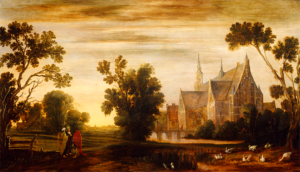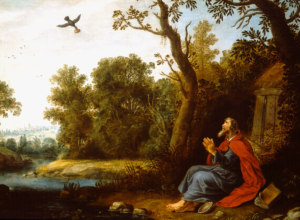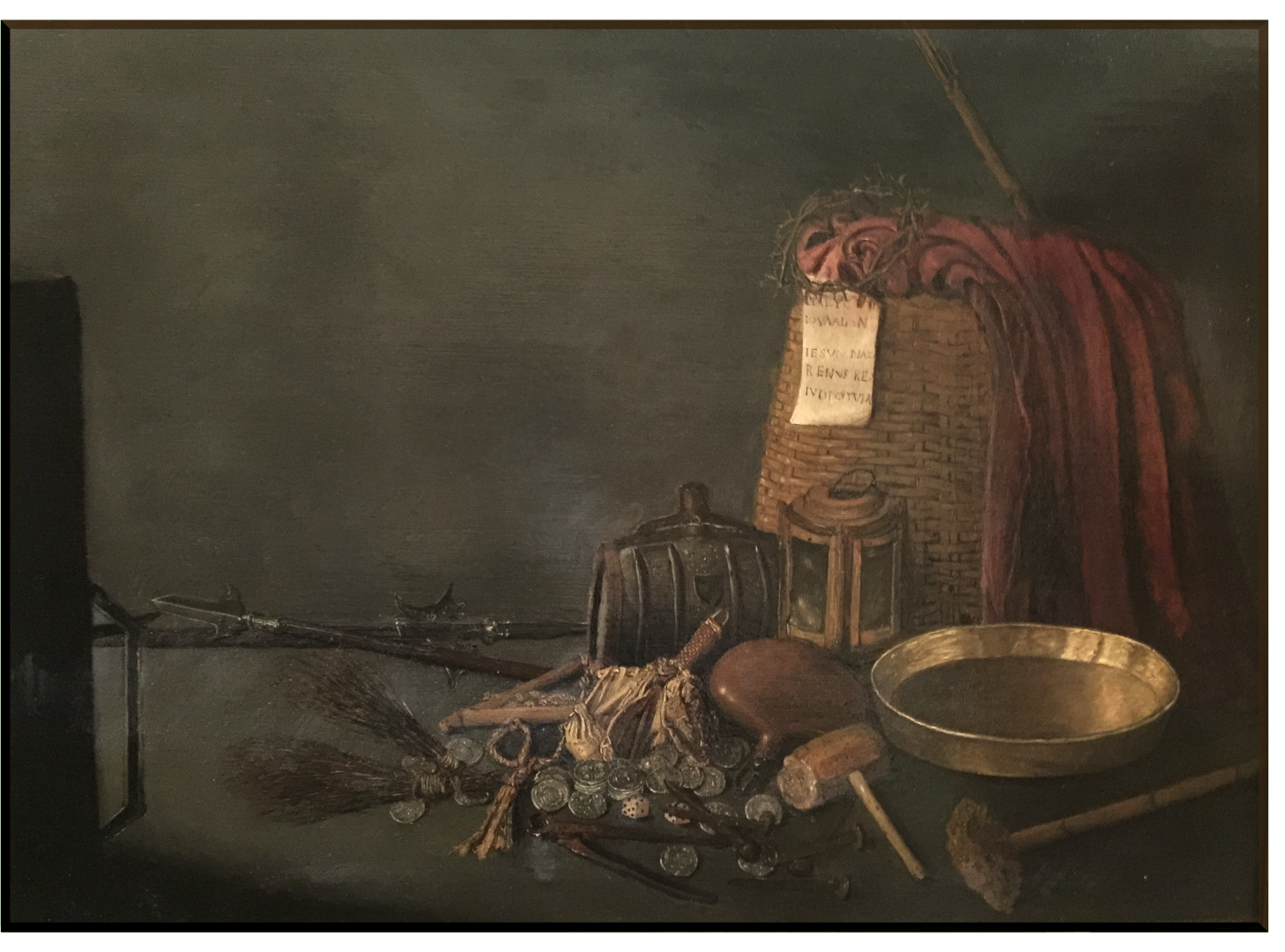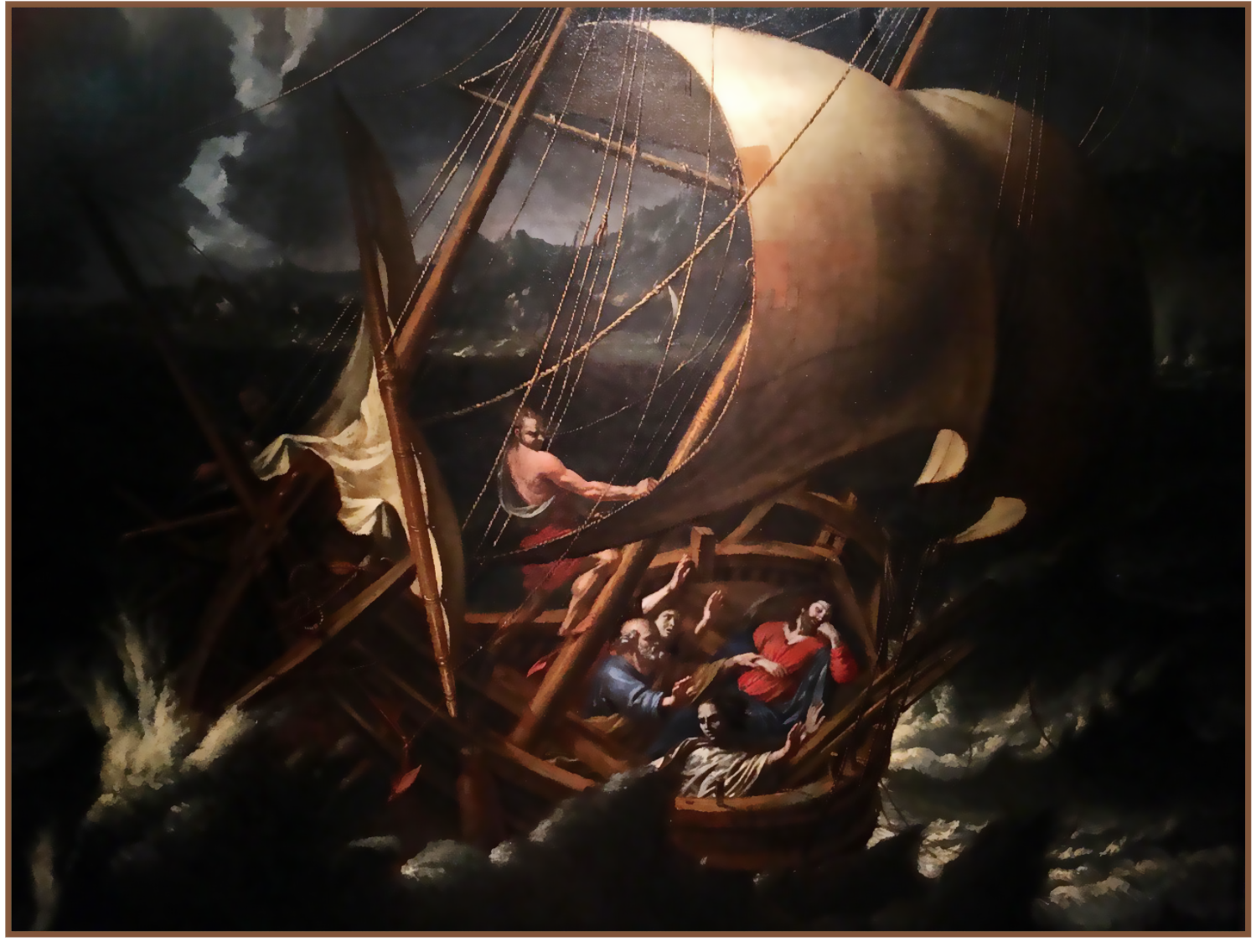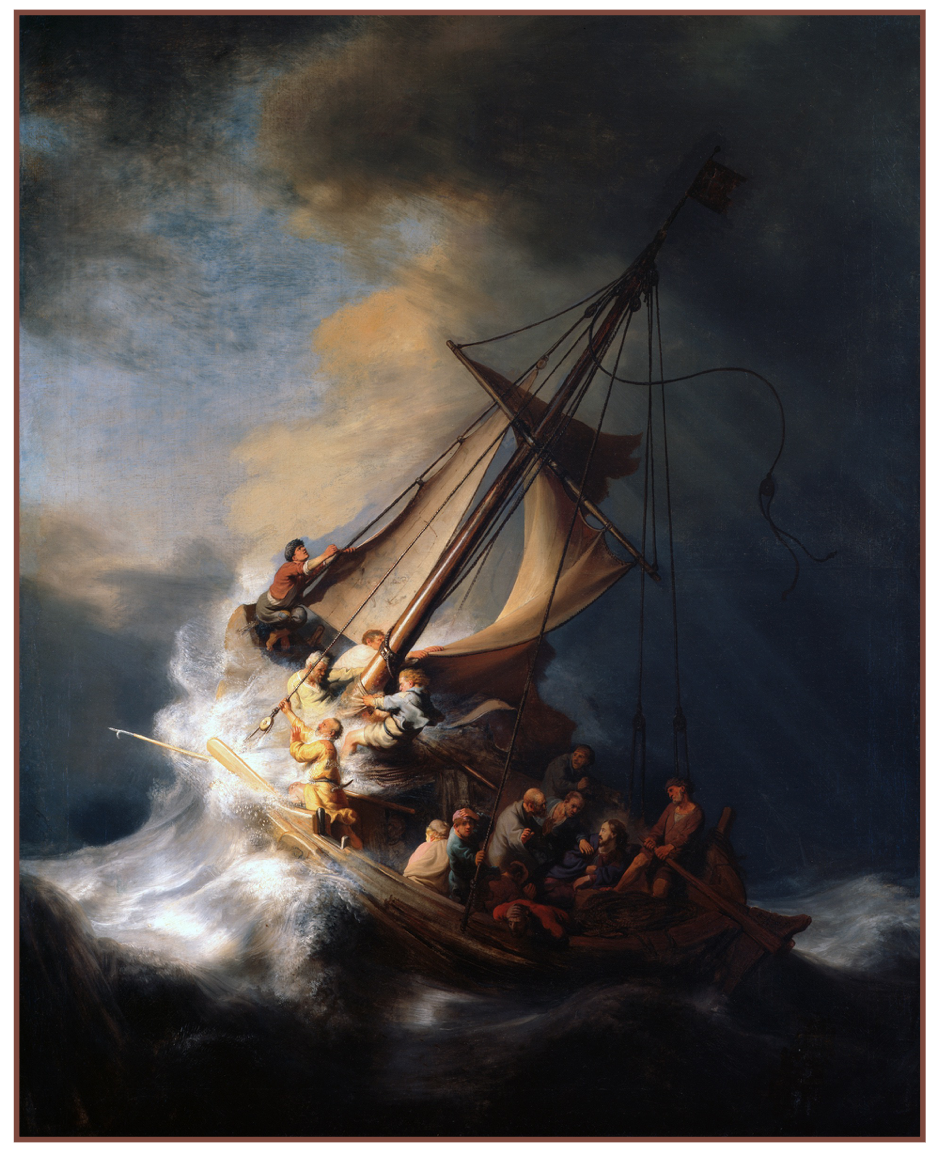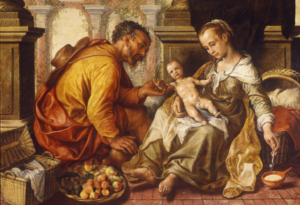The Arrival at Emmaus
Oil on panel
Aert van der Neer
Dutch, c. 1604– d. 1677
Irony in life exists in the world of art as well as in other spheres. There are well-known artists that have died poor or their works were lightly esteemed. Such is the painter of M&G’s The Arrival at Emmaus, Aert van der Neer. He is one of many Dutch landscape artists of the seventeenth century. Born in Gorinchem in the northeastern part of the country and residing mainly in Amsterdam, he is part of the Dutch Golden Age. He was a steward in the early part of his adult life then became more involved in painting in his late thirties or early forties. His wife, Lisabeth, was the sister of artist, Rafael Govertsz Camphuysen (also represented in M&G’s collection).
While Aert died in poverty, one of his sons, Eglon excelled as an artist and ultimately settled in Dusseldorf as a court painter.
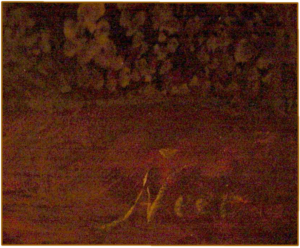 The style of van der Neer and his friendship with painter Aelbert Cuyp led them to work together on a number of paintings. Aert often painted the basic composition, and Aelbert would add the finer details. Works exist with the initials of both artists inscribed on them. However, M&G’s painting is signed only by Aert van der Neer as Neer. (include image: signature detail)
The style of van der Neer and his friendship with painter Aelbert Cuyp led them to work together on a number of paintings. Aert often painted the basic composition, and Aelbert would add the finer details. Works exist with the initials of both artists inscribed on them. However, M&G’s painting is signed only by Aert van der Neer as Neer. (include image: signature detail)
For the whole of his life, Aert never varied his painting style as seen in his many moon-lit landscapes and peopled scenes depicting a centrally placed river. Regardless of some of his repetitive compositional choices, he illustrated favorite parts of his country in an unmistakable way. His landscape style was so frequently imitated during and after his life that author Christopher Wright explains, “Thus—although this is not often realized—van der Neer can be said to have been one of the most influential Dutch painters.”
The Arrival at Emmaus joined M&G’s collection in 1974. It is one of the few scriptural subjects depicted by the artist. Luke 24:13-35 tells the narrative of Christ joining two, heavy-hearted disciples en route to Emmaus from Jerusalem. Christ asked about their conversation, and not recognizing Him, the two shared the tragic account of Christ’s crucifixion and their belief that His missing body could not be located. Little did they know as Christ explained the Old Testament messianic scriptures on their journey, that He was there with them. When they arrived in Emmaus after a nearly seven-mile journey, the two men graciously urged Him to “abide with” them. Christ took the position of host at their supper table and blessed and broke the bread. At that moment, He opened their eyes (v. 31) to understand Who He was—their risen Messiah. Then, with uncontained joy and full comprehension of why their hearts “burned within” as He had spoken the scriptures on the road, they immediately left Emmaus and returned to Jerusalem! There they exclaimed to the disciples that “the Lord is risen indeed” (v. 34).
Visible in this painting is the representation of Emmaus as a Dutch town. A seventeenth-century cathedral is prominent in the background as daylight is receding and the ducks begin nesting down for the night. The two disciples are seen inviting Christ to be their guest, a guest who would vanish from their sight and leave them with a greater realization of who He is. As the season of Advent approaches, may we too recognize who Christ truly is.
John Good, M&G Security Manager
Additional Resource:
The Dutch Painters, 100 Seventeenth Century Masters
Published in 2020
